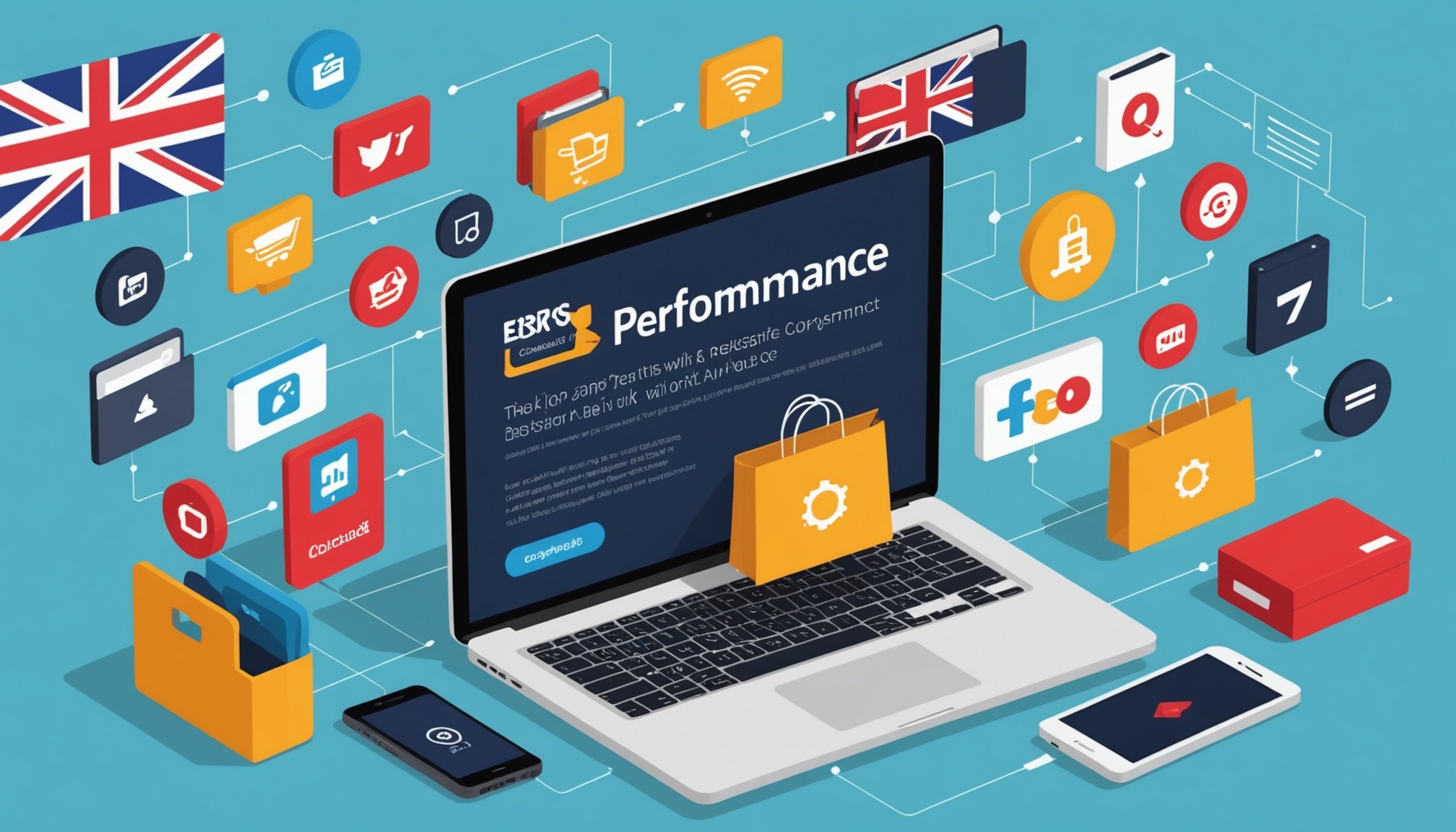Transformative Guide to Boosting E-Commerce Website Performance for UK Businesses
In the ever-evolving landscape of e-commerce, maintaining a high-performing website is crucial for UK businesses aiming to stay ahead of the competition. Here’s a comprehensive guide to help you optimize your e-commerce website, enhance user experience, and drive conversions.
Understanding the Importance of Website Performance
Website performance is not just about loading times; it encompasses a broad range of factors that influence how users interact with your site. For e-commerce businesses, a well-performing website can be the difference between a successful sale and a lost customer.
In parallel : The Ultimate Guide to Building a Scalable Customer Support Framework for E-Commerce Success in the UK
“Each month, we analyze the performance of the top-performing websites across various sectors in the UK,” notes a report by Speetals. This analysis highlights that even slight improvements in load times and user experience can significantly impact conversion rates and customer satisfaction[1].
Optimizing Your Ecommerce Store
Improving Product Pages for Conversions
Optimizing product pages is a critical step in enhancing your e-commerce website’s performance. Here are some key strategies to consider:
Also to read : Transform Your UK Retail Inventory: Unlock Enhanced Efficiency with Predictive Analytics
-
High-Quality Images and Detailed Descriptions: High-quality images and detailed product descriptions can significantly influence purchasing decisions. Ensure that your product pages include multiple images from different angles and detailed descriptions that answer potential customer questions[3].
-
Customer Reviews: Customer reviews are a powerful tool for building trust. Encourage your customers to leave reviews and display them prominently on your product pages.
-
Clear Calls-to-Action: Implement clear and persuasive calls-to-action (CTAs) such as “Add to Cart” buttons. Make sure these CTAs are mobile-friendly to cater to the growing number of mobile shoppers.
-
A/B Testing: Conduct A/B testing to identify which elements on your product pages drive the highest conversion rates. This could include testing different layouts, CTAs, and content to refine your approach continually[5].
Technical Aspects of SEO
Search Engine Optimization (SEO) is vital for driving organic traffic to your e-commerce website. Here are some technical aspects to focus on:
-
Fast Page Load Speed: Ensure that your website loads quickly. A slow-loading website can lead to high bounce rates and negatively impact your SEO performance. For example, pcpartpicker.com dominates in the e-commerce sector with a load time of just 650 ms[1].
-
Mobile-Friendliness: With the majority of users accessing websites through mobile devices, ensuring your website is mobile-friendly is crucial. This includes responsive design and fast loading times on mobile devices.
-
Regular Content Updates: Regularly update your content to keep it fresh and relevant. This can include blog posts that address customer queries and enrich your SEO performance[3].
Leveraging Digital Transformation
The UK digital transformation market is expected to double in size by 2029, reaching $94.07 billion, with a CAGR of 14.72% during the forecast period. This growth is driven by businesses’ increasing online presence and the adoption of advanced technologies such as AI, machine learning, and cloud services[2].
The Role of AI and Automation
AI and automation are transforming the e-commerce landscape in several ways:
-
Personalized Recommendations: AI-powered solutions can provide personalized product recommendations based on customer behavior and preferences. This enhances the customer experience and can lead to higher conversion rates.
-
Predictive Analytics: Machine learning algorithms can analyze large volumes of data to forecast trends, identify potential clients, and optimize marketing efforts. For instance, B2B businesses can use predictive analytics to anticipate customer needs and tailor their marketing strategies accordingly[4].
-
Streamlined Processes: Automation can streamline various processes in e-commerce, from inventory management to order fulfillment, helping businesses operate more efficiently.
Enhancing User Experience
User experience is a critical factor in determining the success of an e-commerce website. Here are some strategies to enhance user experience:
Omnichannel Integration
Omnichannel integration provides a seamless shopping experience across multiple platforms. This includes integrating your website, mobile app, and social media channels to ensure a consistent experience at every touchpoint.
-
Consistent Experience: Ensure that your branding, messaging, and user interface are consistent across all channels. This builds trust and makes the shopping experience more convenient for customers.
-
Personalized Experiences: Use data to provide personalized experiences. For example, if a customer has previously shown interest in a particular product, you can offer them related recommendations across different channels[4].
Self-Service Portals and Online Marketplaces
Self-service portals and online marketplaces are becoming increasingly popular in B2B e-commerce. Here’s how they can enhance user experience:
-
Autonomous Purchasing: Self-service portals allow customers to research products, place orders, and manage their accounts independently. This offers convenience and a streamlined buying experience.
-
Centralized Platform: Online marketplaces like Amazon Business and Alibaba provide a centralized platform where businesses can expand their reach, offer competitive pricing, and attract new customers[4].
Practical Insights and Actionable Advice
Here are some practical insights and actionable advice to help you boost your e-commerce website’s performance:
Prioritizing High-Impact Pages
Not every page on your site is equally important for conversions. Here’s how to prioritize:
-
High-Traffic Pages: Ensure these pages are optimized to guide visitors toward conversions. This includes clear CTAs and a user-friendly design.
-
High-Bounce-Rate Pages: Identify why visitors are leaving quickly. This could be due to unclear CTAs, clunky design, or slow load times. Address these issues to reduce bounce rates.
-
Critical Funnel Pages: Checkout, cart, and forms are often the biggest culprits when it comes to lost conversions. Ensure these pages are smooth and frustration-free[5].
Using Data-Driven Decision Making
Tools like Google Analytics and SEMrush allow you to track performance and identify areas for improvement. Here’s how to use data effectively:
-
Track Key Metrics: Monitor key metrics such as conversion rates, bounce rates, and average session duration. This helps you understand where your website is performing well and where it needs improvement.
-
A/B Testing: Conduct A/B tests to identify which changes drive the highest impact. Prioritize changes based on their potential impact and ease of implementation.
-
Implement Changes Systematically: Implement updates systematically to avoid overwhelming your team or causing disruptions. Let data guide your decisions to ensure each adjustment enhances the user experience and contributes to better conversion rates[5].
Table: Comparing Top-Performing E-Commerce Websites in the UK
| Website | UXR Score | LCP (ms) | Visual Stability | Notable Features |
|---|---|---|---|---|
| pcpartpicker.com | 96.85% | 650 | Excellent | Fast load times, user-friendly interface |
| vouchercodes.co.uk | 94.21% | 1139 | Good | Strong SEO performance, high-quality content |
| bullionbypost.co.uk | 93.56% | 850 | Excellent | Flawless visual stability, smooth navigation |
| vehicleenquiry.service.gov.uk | 98.52% | 617 | Perfect | Exceptionally fast load times, perfect visual stability |
| universal-credit.service.gov.uk | 97.15% | 750 | Good | Smooth, responsive experience |
| oldschool.runescape.wiki | 97.52% | 626 | Excellent | Impressive responsiveness, optimized CLS |
Boosting the performance of your e-commerce website is a multifaceted task that requires a holistic approach. By optimizing your product pages, leveraging digital transformation, enhancing user experience, and using data-driven decision making, you can significantly improve your website’s performance.
As the UK digital transformation market continues to grow, embracing advanced technologies and integrating omnichannel strategies will be key to staying competitive. Remember, every small improvement can lead to significant gains in conversion rates and customer satisfaction.
In the words of a digital marketing expert, “The future of e-commerce is about creating a seamless, personalized, and efficient shopping experience. By focusing on these aspects, businesses can not only meet but exceed the evolving demands of their customers.”
By following the strategies outlined in this guide, you can transform your e-commerce website into a high-performing platform that attracts and retains customers, driving your business forward in the competitive UK market.






